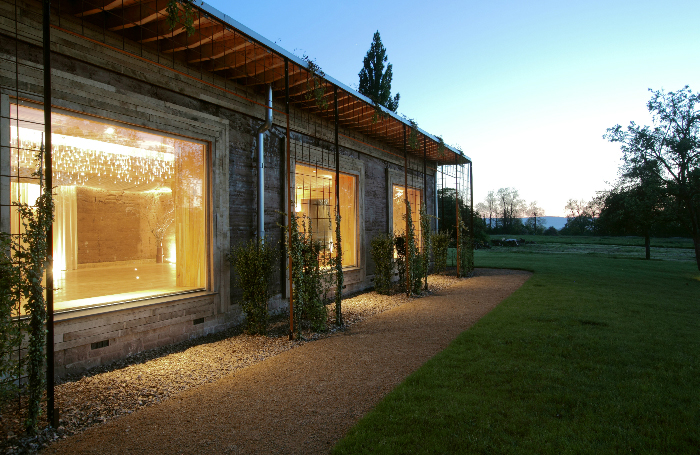Architects that have successfully made claims for Research and Development tax credits are quick to point out that most practices are probably engaged in some activities that would qualify.
Eligible activities do not need to be leading edge
R&D tax credit-worthy activities do not have to be academic or in leading edge technologies. Rather, they just need to further the knowledge of technical teams and tackle challenging issues. They encompass a wide range of activities from developing a construction detail to solving a problem in a residential project, to designing new ways to use rammed earth.
Gloucestershire small practice Millar + Howard Workshop has successfully claimed tax credits for its work on rammed earth, and for the detailing of a tree house on a ‘restricted' site. Yet it has also claimed for developing the use of virtual reality as a design tool across the practice and for its adoption of photogrammetry to measure buildings.
The point is, says Director Tomas Millar, that where there isn’t a standard solution available and you have to analyse the problem, devise your own solution and test it, then you may be doing something that would qualify for R&D credits.

How to claim
The Research and Development tax relief for small or medium-sized enterprises (SMEs), set out in current HMRC guidance, is 230%.
This means that for every £100 of qualifying R&D costs, your practice can reduce its Corporation Tax by an additional £130 on top of the £100 spent.
Millar recounts first hearing of R&D tax credits at the RIBA’s Guerrilla Tactics conference. Afterward, he worked with accountancy and advisory firm BDO (then Moore Stephens), RIBA’s financial adviser. BDO offers an R&D tax credit service in return for a proportion of the savings generated.
"We shared with them the projects we thought might be eligible, they evaluated them to decide what would qualify and then helped draft the technical reports for HMRC. Some activities were judged borderline, some were rejected, while other activities were initially missed in our assessment and later identified by the consultants," says Millar.
Having gone through the process of claiming once, some practices might decide to take on the process by themselves in later years.
"Two additional points worth making" explains Millar, "are that R&D activities do not have to lead to a built project to qualify for credits, and there can be R&D value in a design competition entry, whether you win or lose".
His practice built on its experience of working with rammed earth to explore how the material might be used for a football stadium. The competition entry failed, but the tax credits claim was successful nonetheless.
Is there a question you need to answer?
Facit Homes is not your usual practice, describing itself as a ‘home manufacturer’ that offers a one stop service for its digitally designed and manufactured homes. It also has its own manufactured products and spends a good deal of time on systems development.
Managing Director Bruce Bell says the firm claims R&D tax credits every year as a matter of course.
"We follow the government’s own advice, which is to ask 'Is there a question that you need to answer?' It doesn’t have to be a new product, it might just be a different way of working."
"An example might be: can we produce our cost plans for homes directly from our existing BIM system? Will it work? We put it to the test and answered the question," explains Bell.
Facit Homes assembles its own R&D claims. It prepares reports detailing all direct costs associated with the R&D work and then passes them on ‘for interrogation’ by its accountant. There is an HMRC manual that sets out the process. Bell says it is not difficult, but records must be kept so that claims can be justified.
His company uses time tracking software that is used by everyone, every day, as a matter of good practice management. As the software includes a category for R&D work, the time and costs associated with specific tax credit claims are easy to track.
The guiding principle is that there has to be something that requires a solution.
"There has to be a genuine unknown. If you are working to find an answer and you put it to the test, then it’s R&D," concludes Bell.
If you would like to know more or are interested in making a claim contact RIBA Financial Services on Tel: +44 (0)207 307 3737 Email: ribafinancialservices@riba.org
Thanks to Tomas Millar, director, Millar + Howard Workshop; Bruce Bell, managing director, Facit Homes.
Text by Neal Morris. This is a Professional Feature edited by the RIBA Practice team. Send us your feedback and ideas.
First published: 25 May 2017









